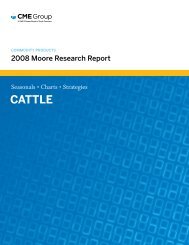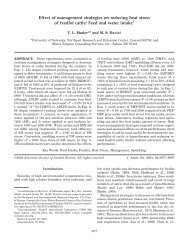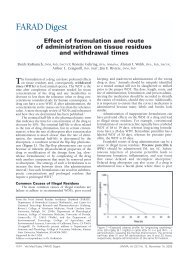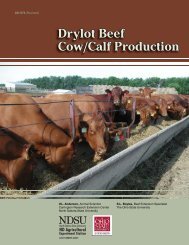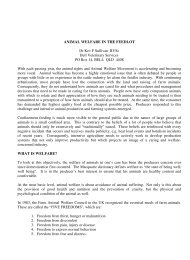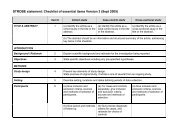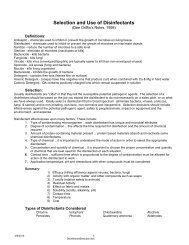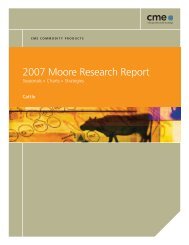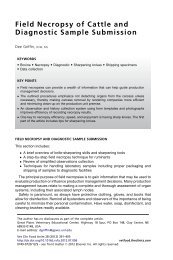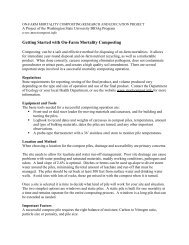CRIMES WITHOUT CONSEQUENCES - gpvec
CRIMES WITHOUT CONSEQUENCES - gpvec
CRIMES WITHOUT CONSEQUENCES - gpvec
You also want an ePaper? Increase the reach of your titles
YUMPU automatically turns print PDFs into web optimized ePapers that Google loves.
Food in pens<br />
enforCement of federal laW in u.s. Plants<br />
crowded and were squealing loudly and climbing up on the back of the hogs<br />
ahead of them. 145<br />
Regulations require animals in pens to have access to feed if held longer than 24 hours. 146<br />
Failure to provide food is infrequently cited, most likely due to the fact that few animals<br />
are held at slaughter facilities for extended periods of time. Following are examples from<br />
federal NRs of failure to provide access to food:<br />
•<br />
•<br />
<br />
I noted that several bulls deemed too large for slaughter that were being held in<br />
Pen 13 awaiting shipment off the company premises did not have access to feed.<br />
A portion of these bulls had been on the premises longer than 24 hours without<br />
access to feed. 147<br />
I observed 4 dairy cows in a pen that had been in that pen for over 24 hours. I<br />
noticed that the animals had not been fed and I asked the manager if indeed this<br />
was the case. He admitted that these animals had not been fed. 148<br />
Observed 8 sheep in the holding pens. These sheep had been held at the plant<br />
in excess of 24 hours, with no indication of an accessible water supply or food.<br />
Observed an overturned rubber/plastic pan. Observed no evidence of food or<br />
water on the floor or in any area of the pen where the animals were being held. 149<br />
Half of all humane violations were caused by either personnel negligence or lack of<br />
proper maintenance or repair of facilities (Table 12). However, stunning equipment<br />
malfunction and personnel incompetence in stunning also caused a significant number<br />
of violations. These violations are seen as having more serious consequences, as they<br />
result in animals being subjected to repeated stunning attempts or being cut, scalded or<br />
skinned while conscious. Cattle were more often the victims of inhumane treatment than<br />
any other species (Table 13), although three times as many pigs as cows are slaughtered<br />
every year in the United States. 150 One explanation for this discrepancy is that electrical<br />
stunning, which is used with pigs, is considered to be more effective and accurate than<br />
captive bolt stunning, the method typically used to render cattle insensible. 151<br />
145 NR issued to plant #05537M on October 3, 2003.<br />
146 9 CFR 313.2(e).<br />
147 NR issued to plant #00532M on March 27, 2003.<br />
148 NR issued to plant #20670M on January 22, 2003.<br />
149 NR issued to plant #02969M on December 16, 2003.<br />
150 Refer to Table 1, Livestock Slaughter by Species.<br />
151 USDA-FSIS, Human Resources Development Staff, For the welfare of livestock (interactive CD training<br />
guide), July 1998.<br />
47




